Abstract
The role of the renin-angiotensin system in the regulation of the systemic and coronary circulations during sodium depletion was studied in conscious normotensive dogs by i.v. administration of teprotide (0.5 mg/kg), an angiotensin-converting enzyme inhibitor, and saralasin (0.05-5 μg/kg per min), an angiotensin-receptor antagonist. Sodium depletion was produced by administering a low sodium diet and furosemide for 5 days. Administration of both teprotide and saralasin lowered systemic arterial blood pressure and total peripheral vascular resistance. Simultaneously, cardiac output increased, but left ventricular end-diastolic pressure, dP/dt, and dP/dt/P did not change significantly. Furthermore, both agents reduced diastolic coronary vascular resistance and increased coronary blood flow, but did not affect myocardial oxygen consumption, left ventricular work, or myocardial efficiency. These systemic and coronary vasodilator effects of teprotide and saralasin, however, were not observed in normal dogs on a regular sodium diet; in this group, the only effect noted was a slight increase in arterial pressure during saralasin infusion. Arterial plasma concentration of norepinephrine did not differ between normal and sodiumdepleted dogs, nor did it change significantly after teprotide administration. These results suggest that, during salt depletion, angiotensin II exerts an active vasoconstrictor action on the systemic and coronary vessels, but has no significant effects on myocardial contractility or energetics. It also appears likely that the increase in cardiac output observed in sodiumdepleted dogs after angiotensin inhibition was caused, at least in part, by the decrease in systemic arterial pressure.
Full text
PDF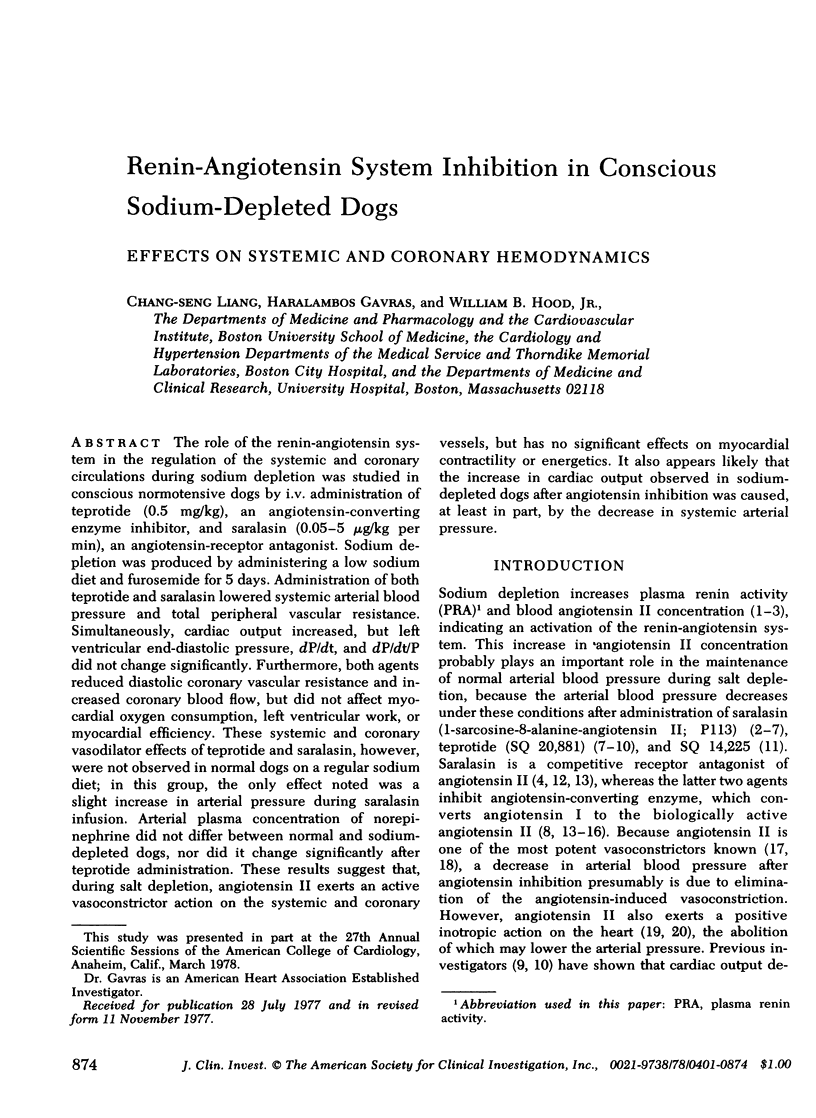
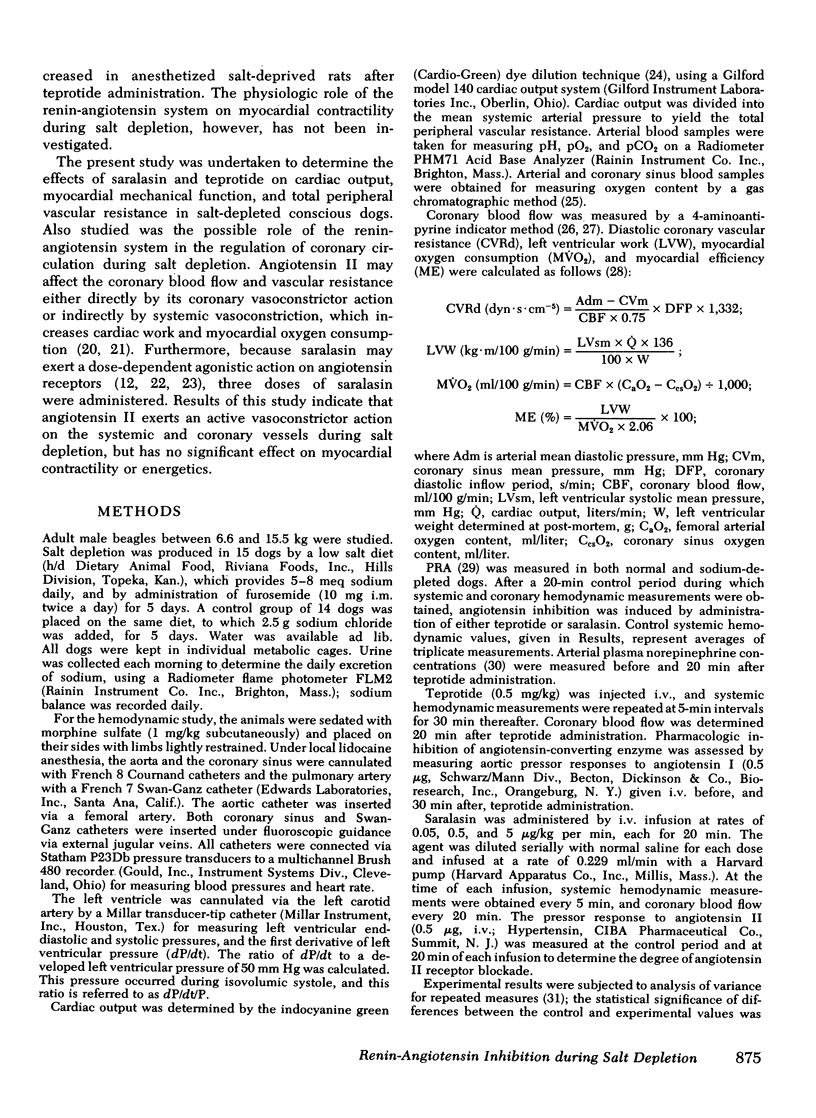
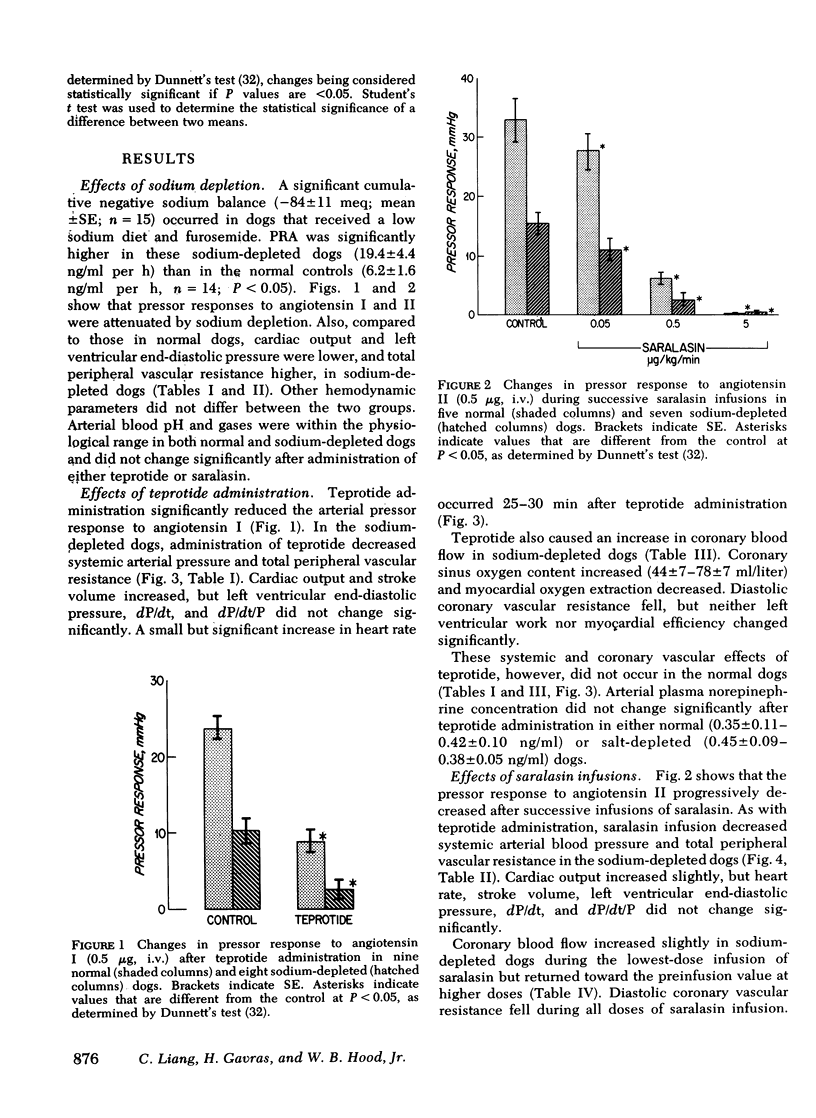
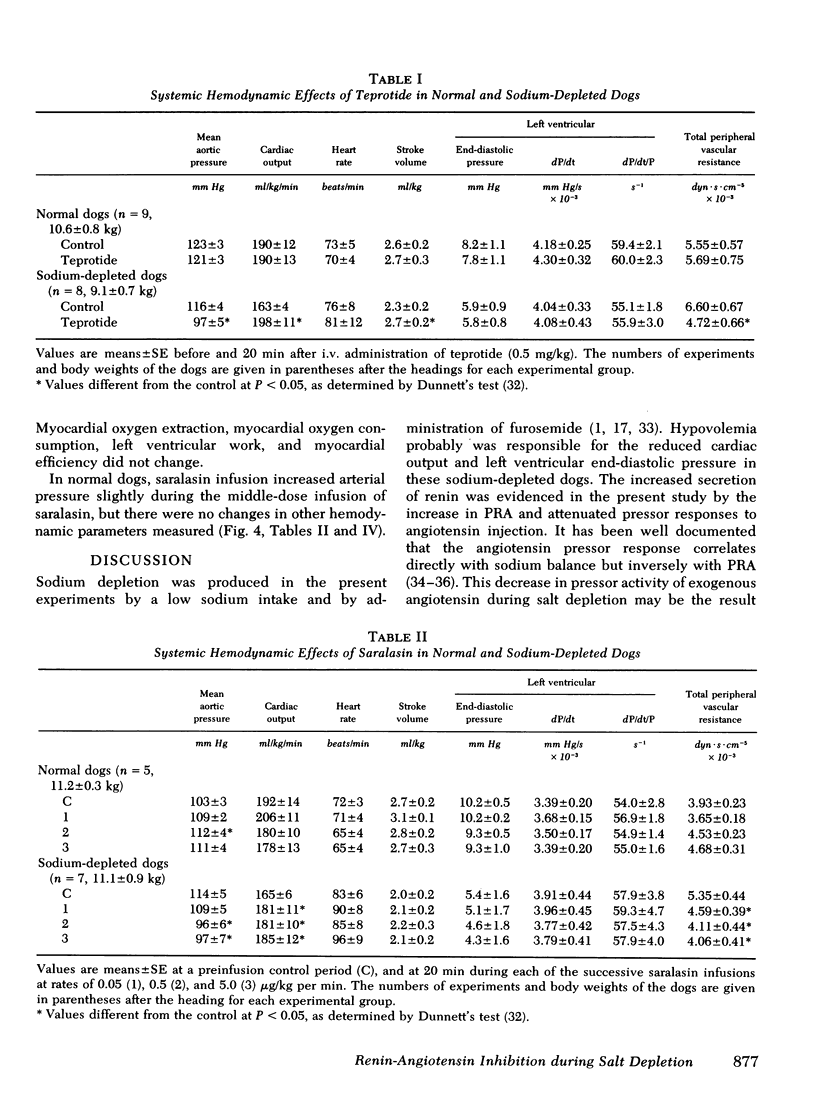
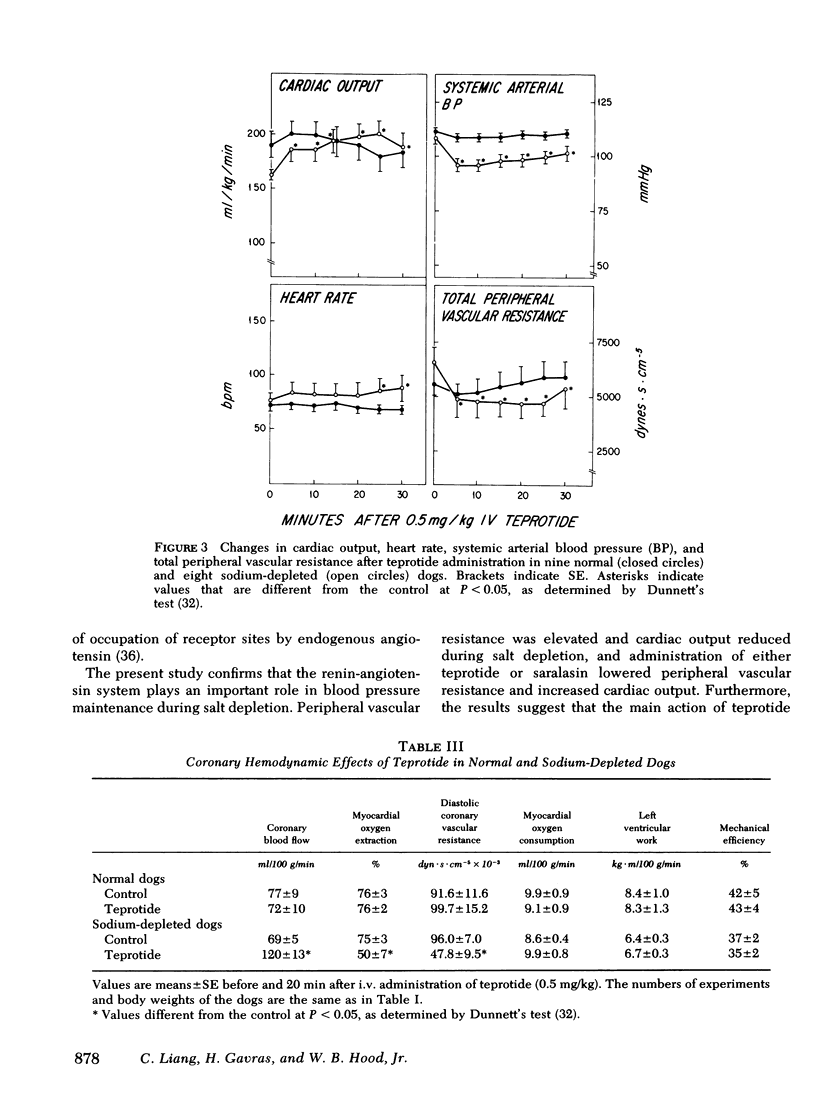
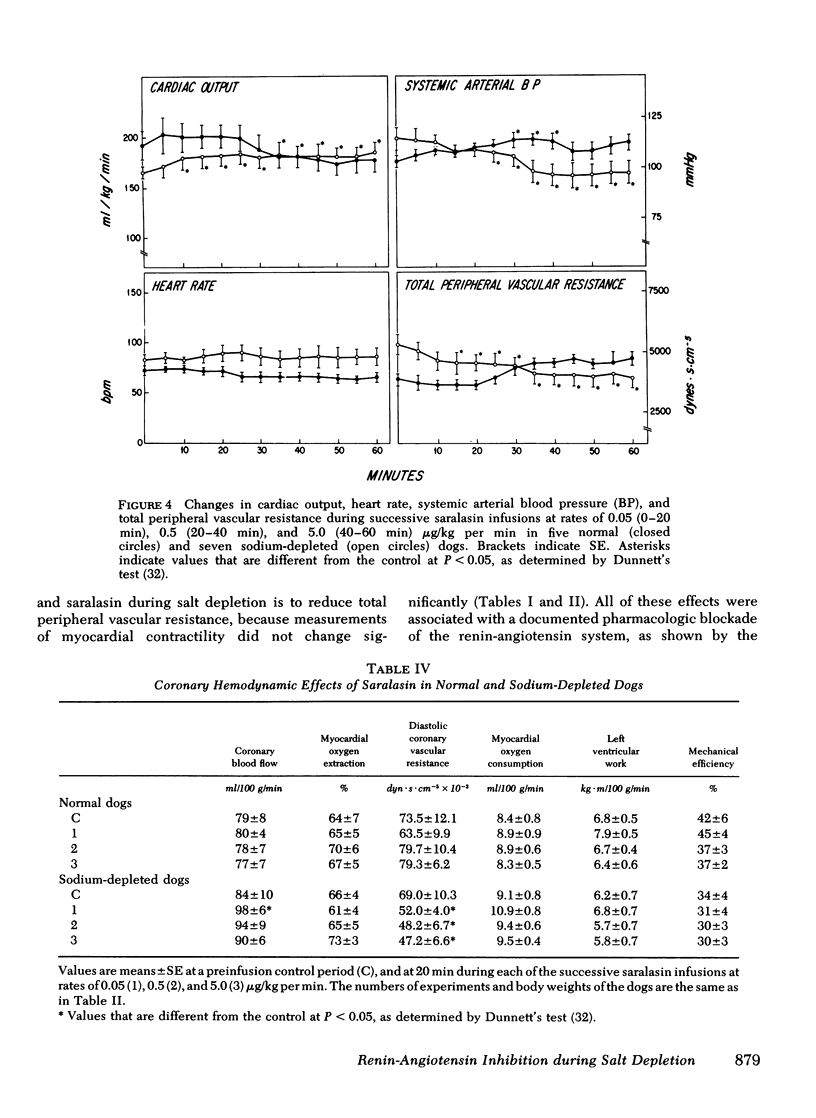
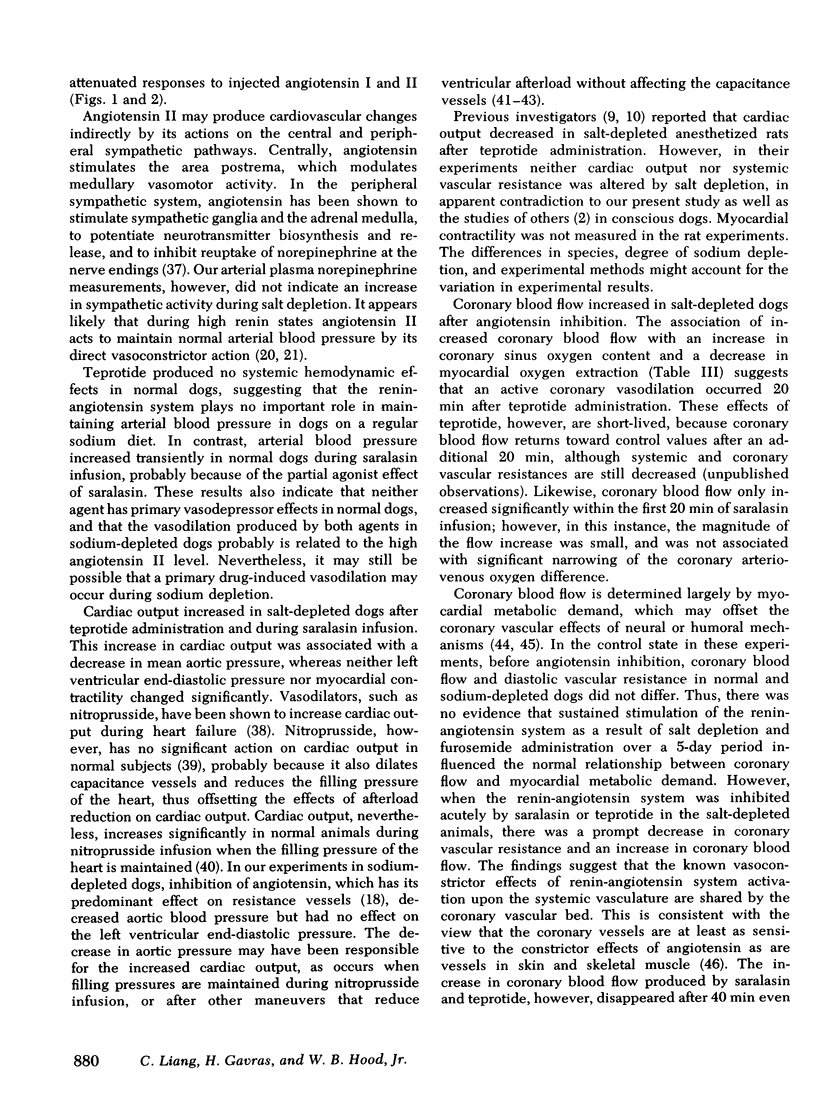
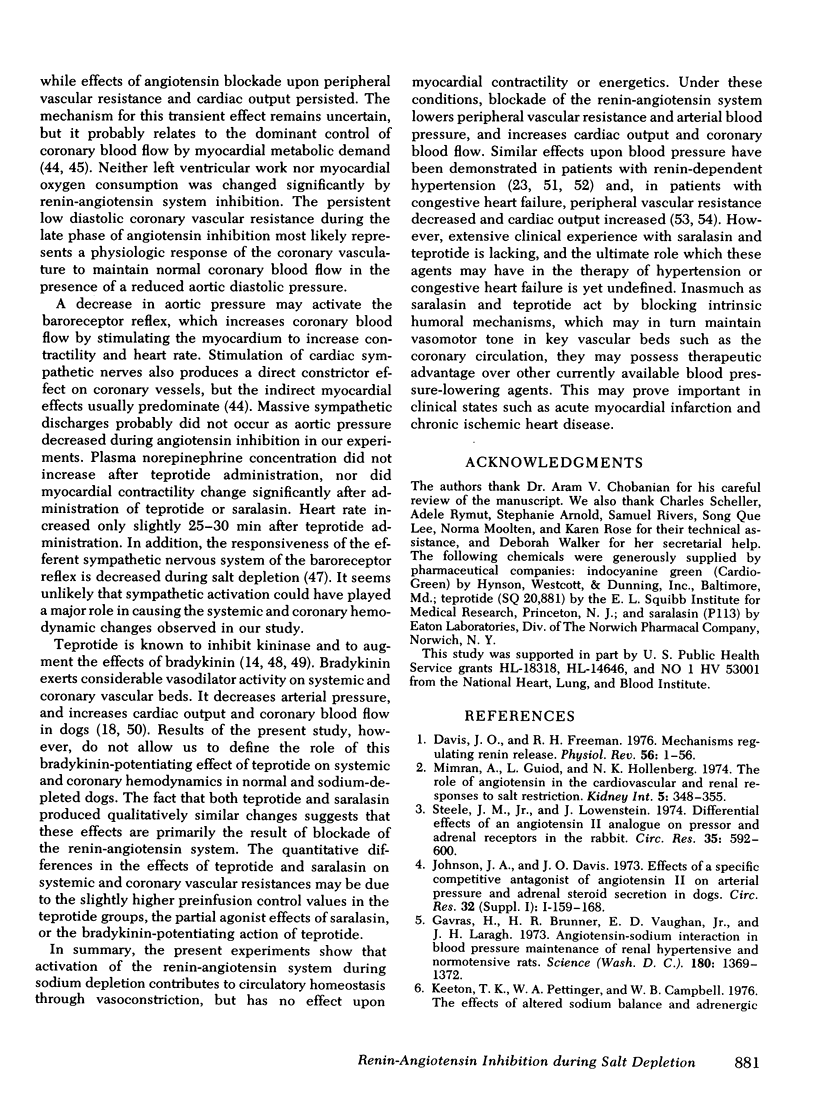
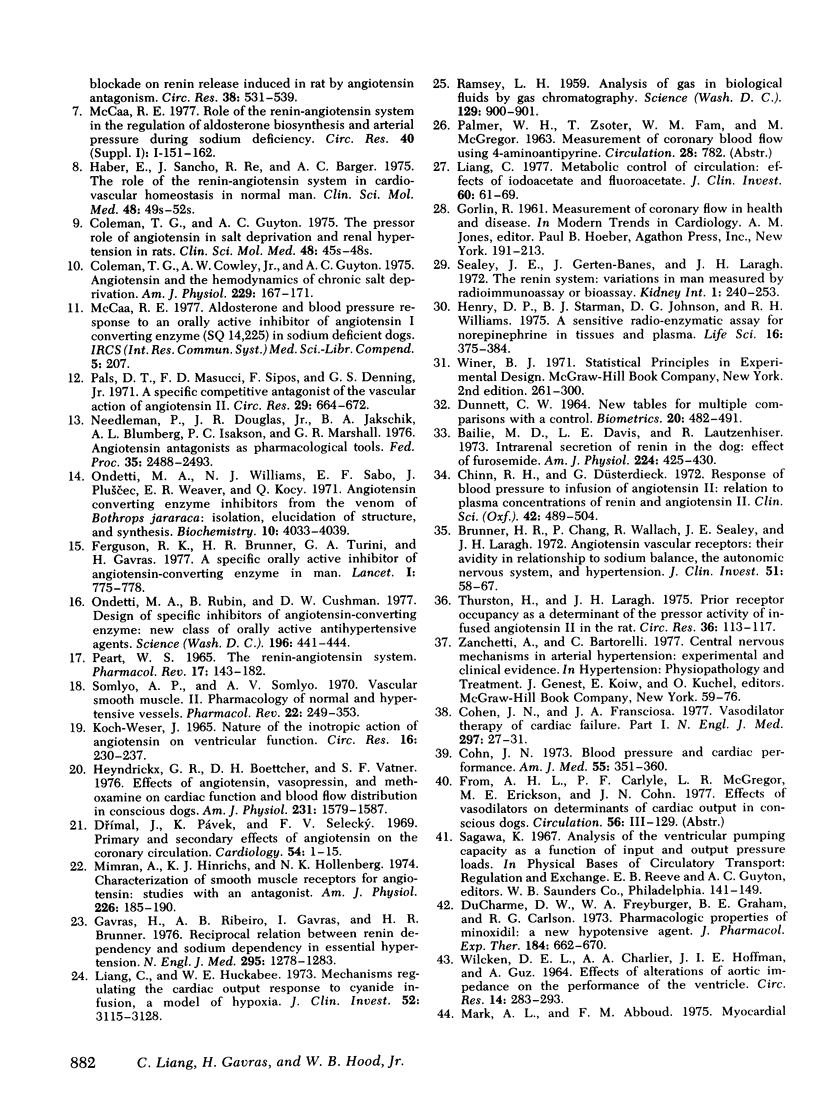
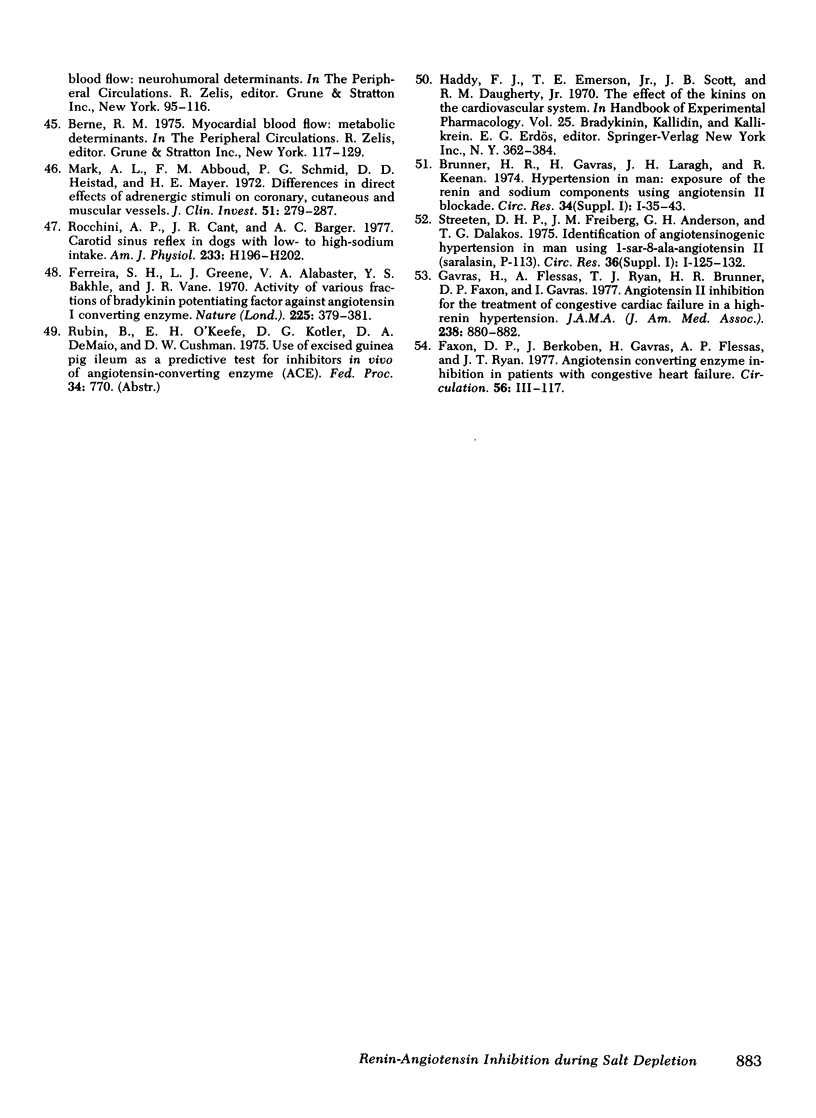
Selected References
These references are in PubMed. This may not be the complete list of references from this article.
- Bailie M. D., Davis L. E., Loutzenhiser R. Intrarenal secretion of renin in the dog: effect of furosemide. Am J Physiol. 1973 Feb;224(2):425–430. doi: 10.1152/ajplegacy.1973.224.2.425. [DOI] [PubMed] [Google Scholar]
- Brunner H. R., Chang P., Wallach R., Sealey J. E., Laragh J. H. Angiotensin II vascular receptors: their avidity in relationship to sodium balance, the autonomic nervous system, and hypertension. J Clin Invest. 1972 Jan;51(1):58–67. doi: 10.1172/JCI106797. [DOI] [PMC free article] [PubMed] [Google Scholar]
- Chinn R. H., Düsterdieck G. The response of blood pressure to infusion of angiotensin II: relation to plasma concentrations of renin and angiotensin II. Clin Sci. 1972 Apr;42(4):489–504. doi: 10.1042/cs0420489. [DOI] [PubMed] [Google Scholar]
- Cohn J. N. Blood pressure and cardiac performance. Am J Med. 1973 Sep;55(3):351–361. doi: 10.1016/0002-9343(73)90135-6. [DOI] [PubMed] [Google Scholar]
- Coleman T. G., Cowley A. W., Jr, Guyton A. C. Angiotensin and the hemodynamics of chronic salt deprivation. Am J Physiol. 1975 Jul;229(1):167–171. doi: 10.1152/ajplegacy.1975.229.1.167. [DOI] [PubMed] [Google Scholar]
- Coleman T. G., Guyton A. C. The pressor role of angiotensin in salt deprivation and renal hypertension in rats. Clin Sci Mol Med Suppl. 1975 Jun;2:45s–48s. doi: 10.1042/cs048045s. [DOI] [PubMed] [Google Scholar]
- Davis J. O., Freeman R. H. Mechanisms regulating renin release. Physiol Rev. 1976 Jan;56(1):1–56. doi: 10.1152/physrev.1976.56.1.1. [DOI] [PubMed] [Google Scholar]
- Drímal J., Pávek K., Selecký F. V. Primary and secondary effects of angiotensin on the coronary circulation. Cardiologia. 1969;54(1):1–15. doi: 10.1159/000166238. [DOI] [PubMed] [Google Scholar]
- DuCharme D. W., Freyburger W. A., Graham B. E., Carlson R. G. Pharmacologic properties of minoxidil: a new hypotensive agent. J Pharmacol Exp Ther. 1973 Mar;184(3):662–670. [PubMed] [Google Scholar]
- Ferguson R. K., Turini G. A., Brunner H. R., Gavras H., McKinstry D. N. A specific orally active inhibitor of angiotensin-converting enzyme in man. Lancet. 1977 Apr 9;1(8015):775–778. doi: 10.1016/s0140-6736(77)92958-0. [DOI] [PubMed] [Google Scholar]
- Ferreira S. H., Greene L. H., Alabaster V. A., Bakhle Y. S., Vane J. R. Activity of various fractions of bradykinin potentiating factor against angiotensin I converting enzyme. Nature. 1970 Jan 24;225(5230):379–380. doi: 10.1038/225379a0. [DOI] [PubMed] [Google Scholar]
- Gavras H., Brunner H. B., Vaughan E. D., Laragh J. H. Angiotensin-sodium interaction in blood pressure maintenance of renal hypertensive and normotensive rats. Science. 1973 Jun 29;180(4093):1369–1371. doi: 10.1126/science.180.4093.1369. [DOI] [PubMed] [Google Scholar]
- Gavras H., Flessas A., Ryan T. J., Brunner H. R., Faxon D. P., Gavras I. Angiotensin II inhibition. Treatment of congestive cardiac failure in a high-renin hypertension. JAMA. 1977 Aug 22;238(8):880–882. doi: 10.1001/jama.238.8.880. [DOI] [PubMed] [Google Scholar]
- Gavras H., Ribeiro A. B., Gavras I., Brunner H. R. Reciprocal relation between renin dependency and sodium dependency in essential hypertension. N Engl J Med. 1976 Dec 2;295(23):1278–1283. doi: 10.1056/NEJM197612022952302. [DOI] [PubMed] [Google Scholar]
- Haber E., Sancho J., Re R., Burton J., Barger A. C. The role of the renin--angiotensin--aldosterone system in cardiovascular homeostasis in normal man. Clin Sci Mol Med Suppl. 1975 Jun;2:49s–52s. [PubMed] [Google Scholar]
- Henry D. P., Starman B. J., Johnson D. G., Williams R. H. A sensitive radioenzymatic assay for norepinephrine in tissues and plasma. Life Sci. 1975 Feb 1;16(3):375–384. doi: 10.1016/0024-3205(75)90258-1. [DOI] [PubMed] [Google Scholar]
- Heyndrickx G. R., Boettcher D. H., Vatner S. F. Effects of angiotensin, vasopressin, and methoxamine on cardiac function and blood flow distribution in conscious dogs. Am J Physiol. 1976 Nov;231(5 Pt 1):1579–1587. doi: 10.1152/ajplegacy.1976.231.5.1579. [DOI] [PubMed] [Google Scholar]
- Johnson J. A., Davis J. O. Effects of a specific competitive antagonist of angiotensin II on arterial pressure and adrenal steroid secretion in dogs. Circ Res. 1973 May 5;32(Suppl):159–168. [PubMed] [Google Scholar]
- KOCH-WESER J. NATURE OF THE INOTROPIC ACTION OF ANGIOTENSIN ON VENTRICULAR MYOCARDIUM. Circ Res. 1965 Mar;16:230–237. doi: 10.1161/01.res.16.3.230. [DOI] [PubMed] [Google Scholar]
- Keeton T. K., Pettinger W. A., Campbell W. B. The effects of altered sodium balance and adrenergic blockade on renin release induced in rats by angiotensin antagonism. Circ Res. 1976 Jun;38(6):531–539. doi: 10.1161/01.res.38.6.531. [DOI] [PubMed] [Google Scholar]
- Liang C. S. Metabolic control of circulation. Effects of iodoacetate and fluoroacetate. J Clin Invest. 1977 Jul;60(1):61–69. doi: 10.1172/JCI108769. [DOI] [PMC free article] [PubMed] [Google Scholar]
- Liang C., Huckabee W. E. Mechanisms regulating the cardiac output response to cyanide infusion, a model of hypoxia. J Clin Invest. 1973 Dec;52(12):3115–3128. doi: 10.1172/JCI107511. [DOI] [PMC free article] [PubMed] [Google Scholar]
- Mark A. L., Abboud F. M., Schmid P. G., Heistad D. D., Mayer H. E. Differences in direct effects of adrenergic stimuli on coronary, cutaneous, and muscular vessels. J Clin Invest. 1972 Feb;51(2):279–287. doi: 10.1172/JCI106812. [DOI] [PMC free article] [PubMed] [Google Scholar]
- Mimran A., Guiod L., Hollenberg N. K. The role of angiotensin in the cardiovascular and renal response to salt restriction. Kidney Int. 1974 May;5(5):348–355. doi: 10.1038/ki.1974.50. [DOI] [PubMed] [Google Scholar]
- Mimran A., Hinrichs K. J., Hollenberg N. K. Characterization of smooth muscle receptors for angiotensin: studies with an antagonist. Am J Physiol. 1974 Jan;226(1):185–190. doi: 10.1152/ajplegacy.1974.226.1.185. [DOI] [PubMed] [Google Scholar]
- Needleman P., Douglas J. R., Jr, Jakschik B. A., Blumberg A. L., Isakson P. C., Marshall G. R. Angiotensin antogonists as pharmacological tools. Fed Proc. 1976 Nov;35(13):2488–2493. [PubMed] [Google Scholar]
- Ondetti M. A., Rubin B., Cushman D. W. Design of specific inhibitors of angiotensin-converting enzyme: new class of orally active antihypertensive agents. Science. 1977 Apr 22;196(4288):441–444. doi: 10.1126/science.191908. [DOI] [PubMed] [Google Scholar]
- Ondetti M. A., Williams N. J., Sabo E. F., Pluscec J., Weaver E. R., Kocy O. Angiotensin-converting enzyme inhibitors from the venom of Bothrops jararaca. Isolation, elucidation of structure, and synthesis. Biochemistry. 1971 Oct 26;10(22):4033–4039. doi: 10.1021/bi00798a004. [DOI] [PubMed] [Google Scholar]
- PEART W. S. THE RENIN-ANGIOTENSIN SYSTEM. Pharmacol Rev. 1965 Jun;17:143–182. [PubMed] [Google Scholar]
- Pals D. T., Masucci F. D., Sipos F., Denning G. S., Jr A specific competitive antagonist of the vascular action of angiotensin. II. Circ Res. 1971 Dec;29(6):664–672. doi: 10.1161/01.res.29.6.664. [DOI] [PubMed] [Google Scholar]
- RAMSEY L. H. Analysis of gas in biological fluids by gas chromatography. Science. 1959 Apr 3;129(3353):900–901. doi: 10.1126/science.129.3353.900. [DOI] [PubMed] [Google Scholar]
- Rocchini A. P., Cant J. R., Barger A. C. Carotid sinus reflex in dogs with low- to high-sodium intake. Am J Physiol. 1977 Aug;233(2):H196–H202. doi: 10.1152/ajpheart.1977.233.2.H196. [DOI] [PubMed] [Google Scholar]
- Sealey J. E., Gerten-Banes J., Laragh J. H. The renin system: Variations in man measured by radioimmunoassay or bioassay. Kidney Int. 1972 Apr;1(4):240–253. doi: 10.1038/ki.1972.34. [DOI] [PubMed] [Google Scholar]
- Somlyo A. P., Somlyo A. V. Vascular smooth muscle. II. Pharmacology of normal and hypotensive vessels. Pharmacol Rev. 1970 Jun;22(2):249–353. [PubMed] [Google Scholar]
- Steele J. M., Jr, Lowenstein J. Differential effects of an angiotensin II analogue on pressor and adrenal receptors in the rabbit. Circ Res. 1974 Oct;35(4):592–600. doi: 10.1161/01.res.35.4.592. [DOI] [PubMed] [Google Scholar]
- Streeten D. H., Freiberg J. M., Anderson G. H., Dalakos T. G. Identification of angiotensinogenic hypertension in man using 1-sar-8-ala-angiotensin II (Saralasin, P-113). Circ Res. 1975 Jun;36(6 Suppl 1):125–132. doi: 10.1161/01.res.36.6.125. [DOI] [PubMed] [Google Scholar]
- Thurston H., Laragh J. H. Prior receptor occupancy as a determinant of the pressor activity of infused angiotensin II in the rat. Circ Res. 1975 Jan;36(1):113–117. doi: 10.1161/01.res.36.1.113. [DOI] [PubMed] [Google Scholar]
- WILCKEN D. E., CHARLIER A. A., HOFFMAN J. I., GUZ A. EFFECTS OF ALTERATIONS IN AORTIC IMPEDANCE ON THE PERFORMANCE OF THE VENTRICLES. Circ Res. 1964 Apr;14:283–293. doi: 10.1161/01.res.14.4.283. [DOI] [PubMed] [Google Scholar]


